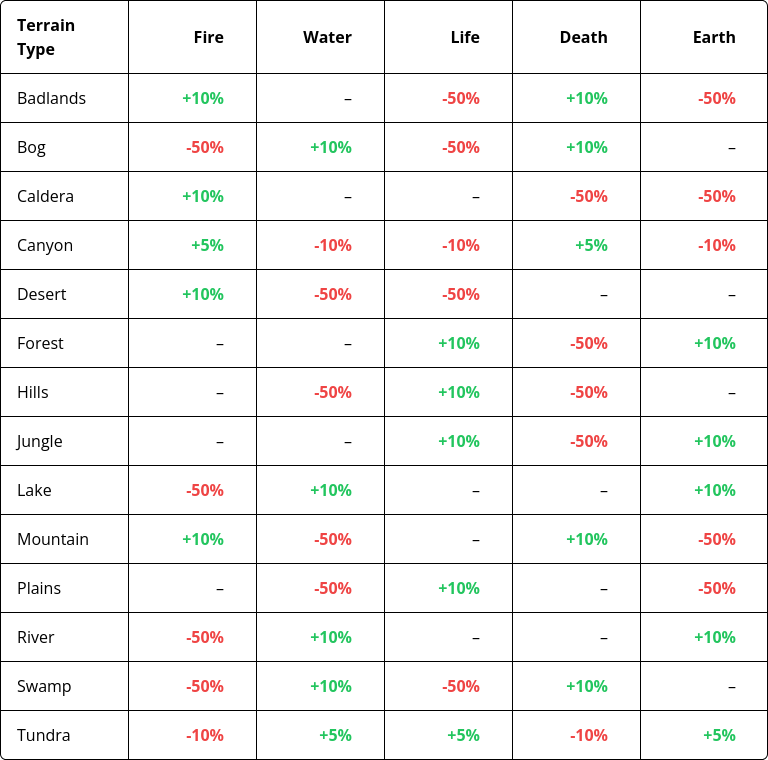Sustainable Land Use in Splinterlands
I feel kinda weird using this title, as its irony is not lost on me. How can someone, who's supposedly as passionate as I am about sustainable practices in gardening, apply its principles to a game designed around fighting battles with a collection of monster cards? Am I going to increase the biodiversity of my plots, raise its water table, and add to the topsoil cover? Do I want to create an interwoven ecosystem in my three plots in Althania? (I'm pretty sure none of this is actually possible in the game!) Or am I talking about a different kind of sustainability?
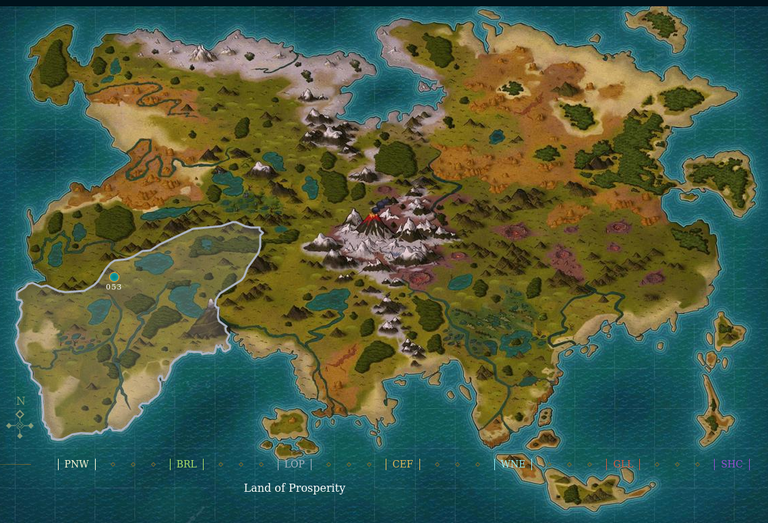
Don't Want to Spend More than I Earn
Farming has its costs, that is certain, and it tends to be a long-term effort. You must carefully calculate what you invest, over which time period, and compare it with your potential yield, in oder to even get an idea whether it's profitable or not. Often times, even the best calculations and prognostications will not give you as accurate of an assessment as what you get from plain old practice. That, however, will take its time, and since you most likely won't get it right from the start, trying things out will also cost you more initially. Fortunately, I have reached a point, where the three plots I own can sustain themselves without getting any additional input to cover their running costs. How I have done this is what I would like to share with you here.
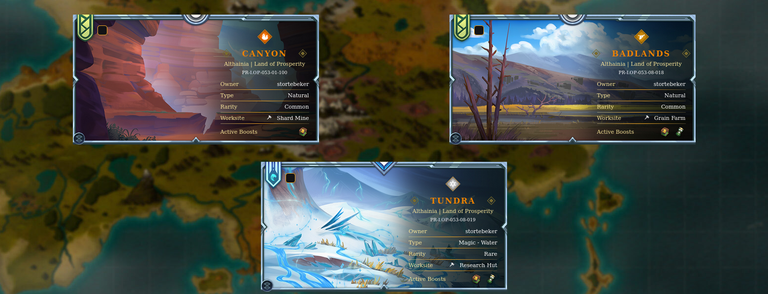
A Badlands, A Canyon, and A Tundra
The three plots I mentioned are a piece of badlands, which is suitable for grain production, a tundra, where I can do research, and a canyon, where I have a shard mine for SPS production. Of course I had to build the mine and the research hut first, before I could put my monsters to work there, the same way as the badlands needed a grain farm. Once these structures were completed, I could bring in monsters and put them to work.
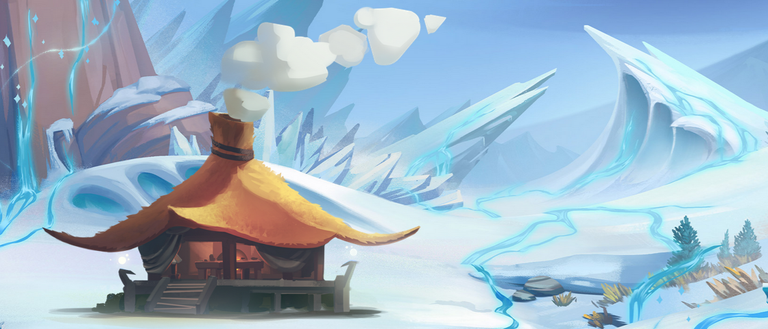
It makes a huge difference which types of monsters get to work on which plot, a complex issue, where this table comes in super helpful. So I looked through my collection of cards, and selected the ones that would prove to be most profitable on each plot. Higher levels, rarity, and gold foil are all taken into account. In the end I was quite pleased to have filled all five slots in each of the three plots with the best monsters I had. (All the others I continue renting out for DEC.) So work could finally start...!
Grain to Feed my Hungry Workers
A few days later, when the progress bar had reached 100% and I was ready to harvest each plot, it finally hit me: My three plots would surely run me into ruin if I didn't make some serious changes! As it turns out, I was not producing nearly enough grain to feed my monsters. Sure, I could go out and buy some, using my plentiful DEC, which however was getting less and less plentiful each time. So what could I do?

First I stopped production in the canyon and the tundra, focusing only on wheat production on the badlands. At the same time I started looking for other cards on the market that were of the same type I had working on my plots, so I could combine them to a higher level. This itself was a long and slow process, as I had to wait three days of cool-down after taking one off from work, followed by another three days of unblocking them, before I could level them up.
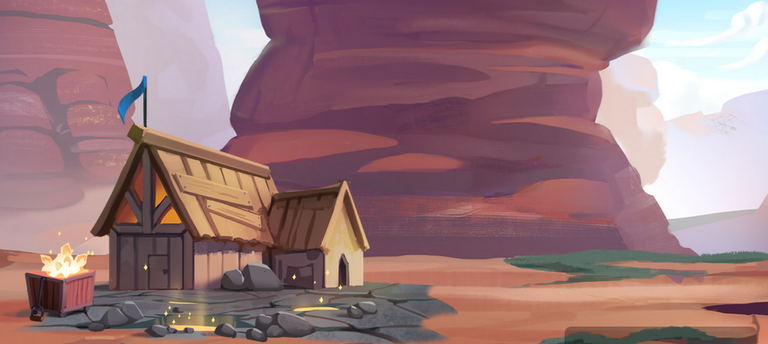
No Additional Spendings
As I was buying grain, as well as new cards with my DEC, I made sure not to spend any of my outside funds on them. This is a strategy I have been maintaining from the start, when I first got into Splinterlands back in 2018. Fortunately I had nicely reliable sources: Having placed a substantial sum into the SPS:SWAP.HIVE pool, I had a steady passive income of around 70-100 SPS each week. Normally I would convert half of it into SWAP.HIVE and pour it all back into the pool, increasing the weekly reward slightly each time. Now, I simply changed this amount into DEC instead so I could buy what I needed.
Three Sustainable Teams
It took me various months, from the first time we could farm our plots until now, before I finally had three teams of workers that would not eat more than what the grain team could produce. Of course this meant improving on the latter, which by now is complete.
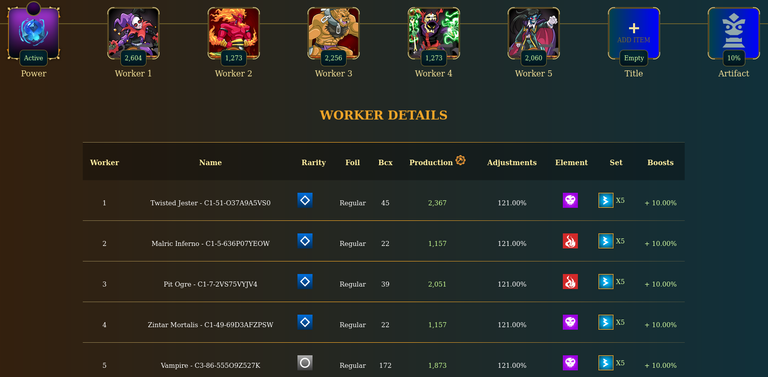
Fire and Death splinters are particularly effective on the badlands (quite ironic, considering that they're growing grain there), but each one of my workers had to be improved on quite a bit. But at their current levels they can sustain themselves as well as the other two teams.
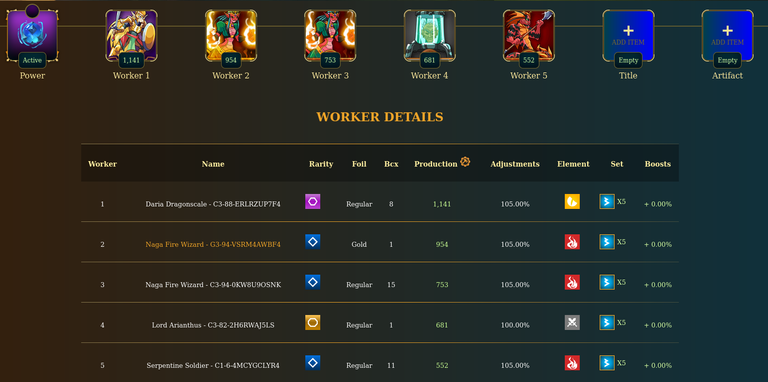
The Canyon and the Tundra are both not particularly great for either splinter, but the former at least gives a bit of an advantage to - once again - Death and Fire, while the latter favors the other three splinters.
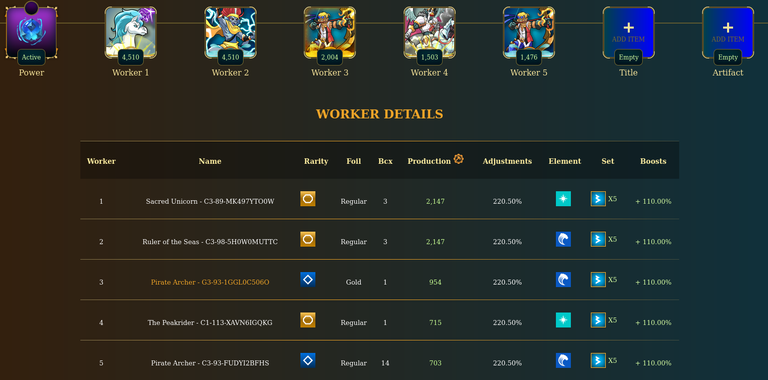
Lean Back and Reap the Harvest
So now that my farms can sustain themselves, I can redirect my SPS reward back into the liquidity pool. As for the SPS I am farming, it is actually ridiculously little, compared to my pool rewards, raising the questions of what the point is of this whole farming endeavor. As for my research, that is a whole nother question of how I can make good use of it. So far I have no idea, but I'm sure I'll get to find it out too.
To see more of my posts on Splinterlands and a few other other Hive games I have tried, take a look at my series Fun and Games and Playing with Money.
